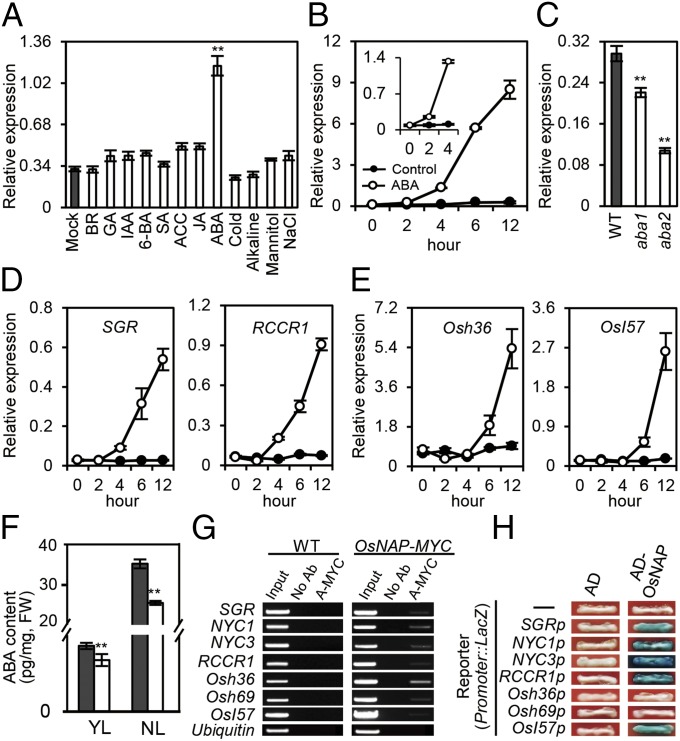Fig. 3.
OsNAP connects ABA and SAGs by directly targeting promoters of SAGs in rice. (A) Effects of phytohormones and abiotic stresses on OsNAP expression. 6-BA, 6-benzylaminopurine; ACC, 1-aminocyclo-propane-1-carboxylic acid; BR, brassinosteroid; GA3, gibberellic acid; IAA, indole-3-acetic acid; JA, jasmonic acid; SA, salicylic acid. **P ≤ 0.01; Student t test. (B) Kinetic analysis by qRT-PCR of OsNAP expression after treatment with 50 µm ABA. (Inset) Enlarged view of time points 0, 2, and 4. (C) Decreased expression of OsNAP in aba1 and aba2 mutants. Age-matched fully expanded flag leaves were used for the analysis. **P ≤ 0.01; Student t test. (D and E) Kinetic expression analysis of two CDGs, SGR and RCCR1, (D) and two other SAGs, Osh36 and OsI57, (E) after treatment with 50 µm ABA. (F) ABA content in wild-type plants and ps1-D mutants. YL, young leaf approximately half the size of a fully expanded leaf. NL, fully-expanded, non-senescent flag leaves. The black bar represents wild-type plants, and the white bar represents for ps1-D mutants. FW, fresh weight. **P ≤ 0.01; Student t test. (G) ChIP-PCR analysis of the promoter regions of SAGs. Immunoprecipitation was performed with anti-MYC antibody (A-MYC) or without antibody (No Ab). The promoter of Ubiquitin was used as a negative control. (H) AD-OsNAP activates the expression of the LacZ reporter genes driven by the promoters of respective SAGs in yeast. Representative data are shown from one of the three biological replicates, which yielded similar results.

